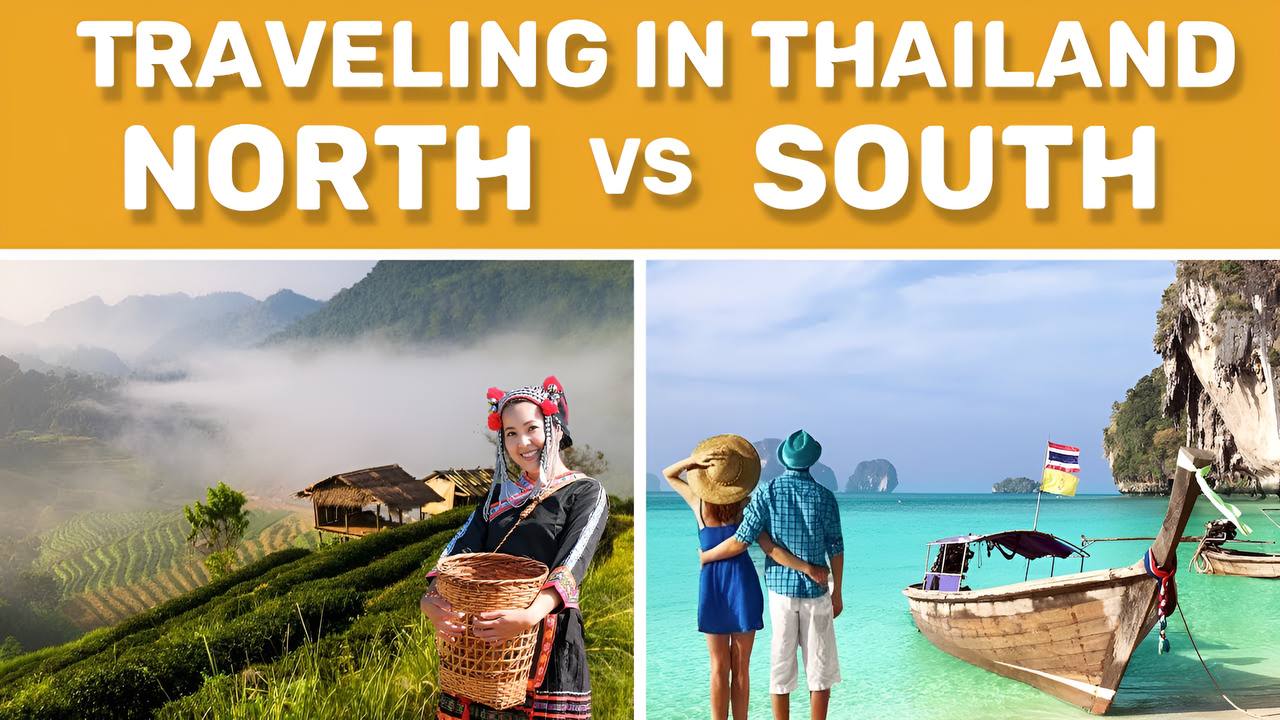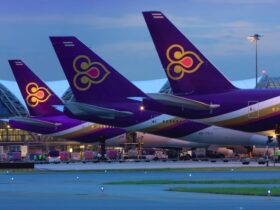Thailand extends an array of distinct encounters to its visitors, ranging from its landscapes and cuisine to its language and culture. The variance can be quite striking, contingent on the specific region you decide to explore. Choosing between the enchanting undulating hills of the north and the unspoiled shores of the south can be a challenging decision. To aid you in making an informed choice, we’ve dissected the disparities between these two regions below.
1. Landscape
Divergence in landscape stands out as a primary distinction between northern and southern Thailand. The terrain in northern Thailand predominantly comprises forested mountains and valleys. This region is home to various hill tribes such as the Lisu, Tai Yai, Yao, and Hmong, and it boasts Thailand’s highest peak, Doi Inthanon. Conversely, southern Thailand features pristine turquoise waters and powdery white beaches, with the Andaman Sea bordering its western side and the Gulf of Thailand to its east. Countless captivating tropical islands and an assorted underwater world abound in the south.
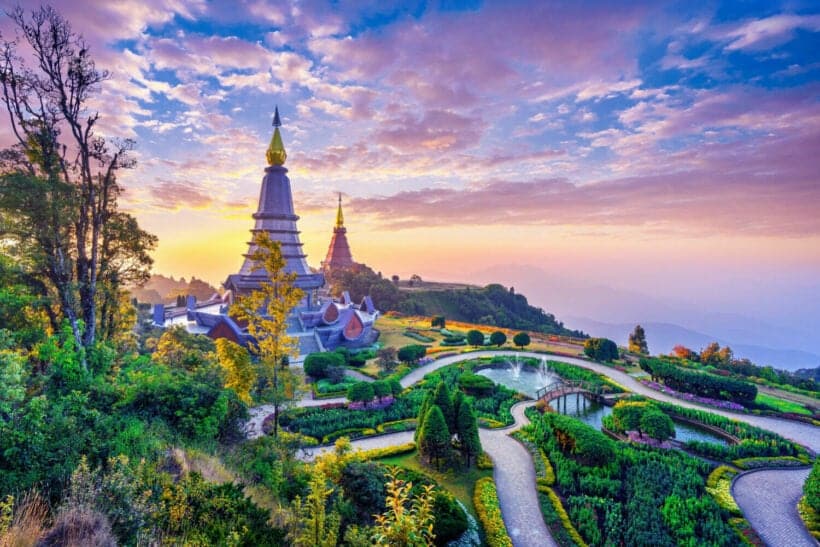
Highlight of Northern Thailand: Cities and Mountains
For a true immersion into authentic Thai culture, northern Thailand proves to be an ideal destination. This part of the country boasts several captivating cities, including Chiang Mai, Chiang Rai, and Pai. Often referred to as the “Capital of the North,” Chiang Mai is replete with stunning temples, resembling a more laid-back version of Bangkok. Although it’s a favored tourist spot, it retains a less touristy ambiance compared to many southern cities.
Chiang Rai, Thailand’s northernmost city, is a destination worth exploring. Despite the similar names, Chiang Rai and Chiang Mai are markedly distinct. Chiang Rai exudes a slower pace with a pronounced village-like atmosphere. The famed Wat Rong Khun, an ethereal white temple, graces the city. Not to be overlooked is Pai, a quaint town frequented by backpackers, renowned for its relaxed vibe, vibrant parties, live music, night markets, and eateries.
Further enhancing northern Thailand’s appeal are its striking mountains. Adventurers would relish hikes on Doi Inthanon, Doi Suthep, and Doi Mae Tho when journeying through this region.
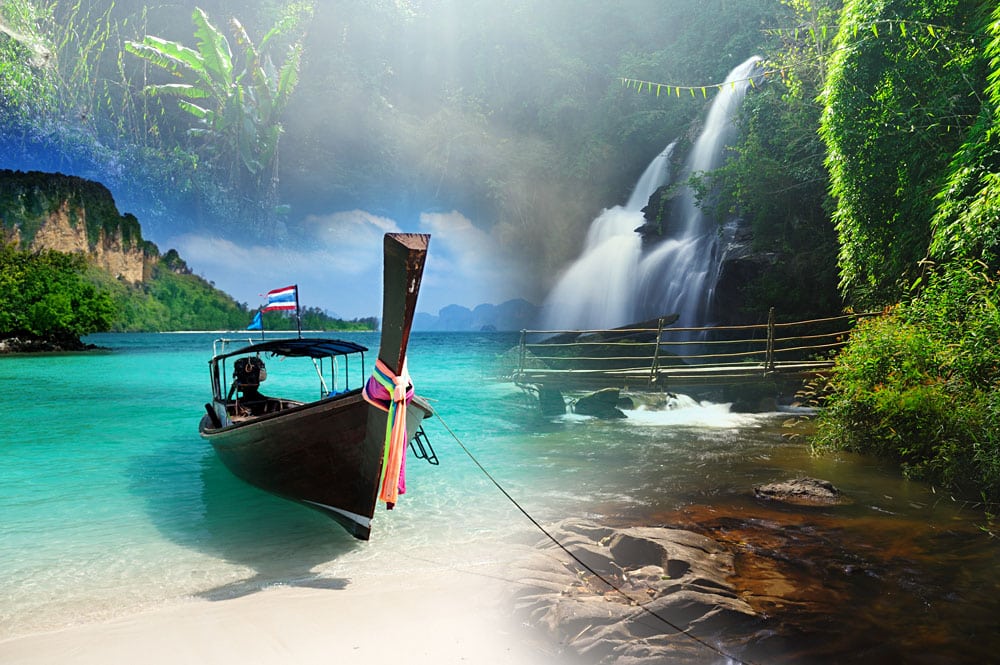
Highlight of Southern Thailand: Beaches
Thailand’s breathtaking beaches attract travelers from around the globe, and southern Thailand is the veritable haven for such coastal splendors. The southern reaches of the country encompass some of the planet’s most stunning islands, each boasting its own paradisiacal beaches. Notable islands on the Andaman Sea’s western coast include Phuket, Koh Lanta, Koh Phi Phi, and Koh Lipe, while the Gulf of Thailand’s eastern coast showcases Koh Samui, Koh Tao, and Koh Phangan.
Each southern island offers a distinctive allure. Koh Phangan stands as a party hub, notorious for its Full Moon Party—a monthly all-night revelry. In contrast, Koh Lipe, nestled within the Andaman Sea, exudes tranquility with its picturesque beaches, providing an idyllic escape from the daily hustle and bustle. The island’s surrounding waters are renowned for their exceptional snorkeling and diving sites.
2. Activities
The diversity in landscape naturally translates to a diverse array of activities. Northern Thailand, blessed with its captivating cities and mountains, offers an abundance of landmarks, cultural excursions, and outdoor adventures. The region boasts resplendent temples, bustling nocturnal bazaars, and untouched hill-tribe settlements.
Outdoor activities in the north tend to center around its mountains. Opportunities range from waterfall swims and jungle treks to white-water rafting and visits to ethical elephant sanctuaries. Noteworthy among the waterfalls is the Phu Kaeng Waterfall in Doi Luang National Park, accessed by a jungle trek offering wildlife encounters and glimpses of ethnic villages.
Southern Thailand, in contrast, embraces a profusion of islands scattered across the Andaman Sea and Gulf of Thailand. Whether reveling in night-long celebrations or basking in the tranquility of pristine shores, there is an island suited to every inclination. Activities in the south encompass island hopping, snorkeling, scuba diving, beach parties, and, of course, relaxation by the seaside.
Both northern and southern Thailand afford a rich array of cultural attractions. For instance, Chiang Mai houses captivating temples like Wat Phra That Doi Suthep and Wat Rong Khun—two must-see treasures. In the south, Wat Hat Yai Nai Temple in Hat Yai and the towering Big Buddha in Phuket beckon visitors.
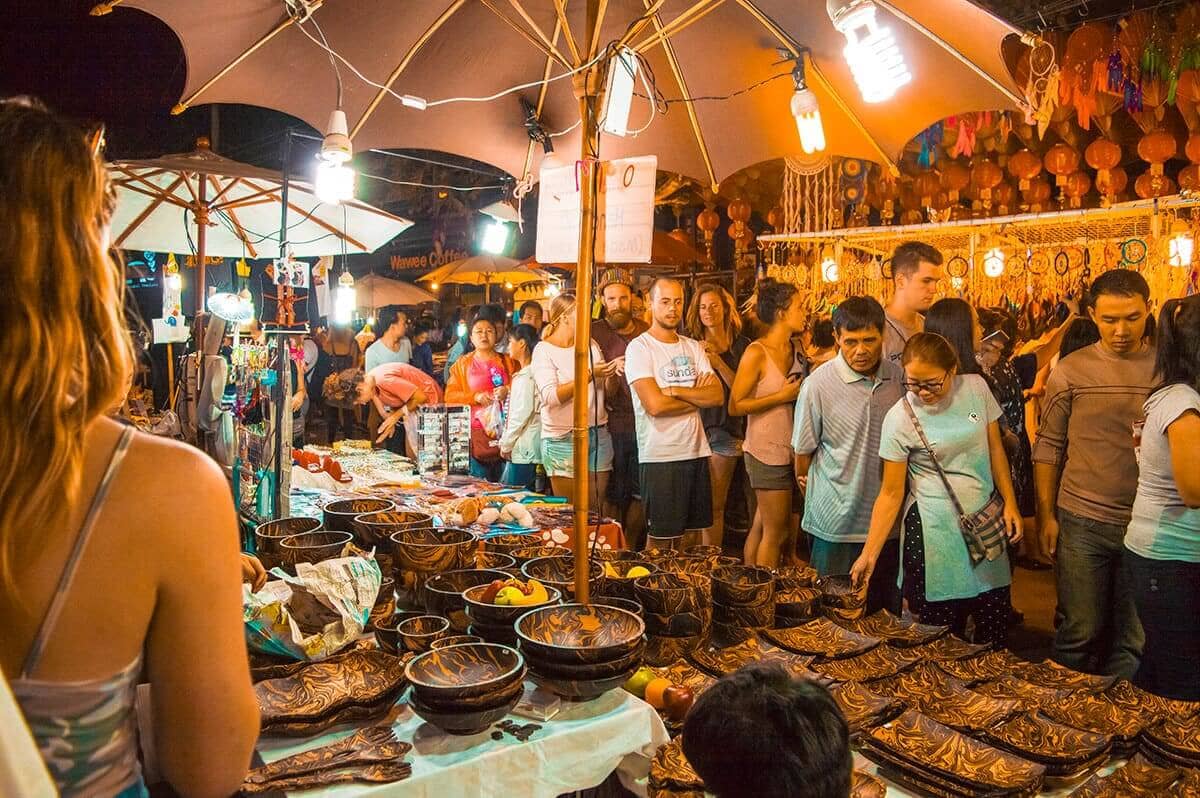
3. Nightlife
The contrast in nightlife between southern and northern Thailand is palpable, with the southern part boasting a livelier scene. Those seeking vibrant parties would find the south to be a perfect destination. The likes of Phuket and Koh Samui, islands abundant in choices, are teeming with hundreds of venues to revel in. Notably, Koh Phangan stands out for its renowned full-moon parties. Nonetheless, this doesn’t imply that the north lacks an engaging nightlife—it simply offers a slightly less overwhelming experience. The north is adorned with numerous dining establishments, night markets, clubs, and bars; however, most tend to close by midnight. Thus, northern Thailand proves more appealing to those aiming to steer clear of exuberant revelry.
4. Weather and Climate
Thailand’s climate is characterized by three major seasons: cool, hot, and rainy. Nevertheless, there are subtle climatic variations across the country. The cool and dry period in northern Thailand spans from October to February, while the hot and dry stretch persists from March to May. The rainy season occupies the remainder of the months, encompassing June to October. Notably, the cool season in the north tends to be chillier than its southern counterpart, particularly during the early mornings and late evenings.
Southern Thailand experiences divergent climates on its western and eastern coasts. On the west coast, including Phuket, dry conditions prevail from November to March. Conversely, the east coast, such as Koh Samui, relishes a dry spell from January to November. Unlike the north, the south of Thailand remains considerably hotter throughout the year. The scorching heat during the hot season can be somewhat overpowering, making a dip in the crystalline waters or retreat to air-conditioned spaces an appealing respite.
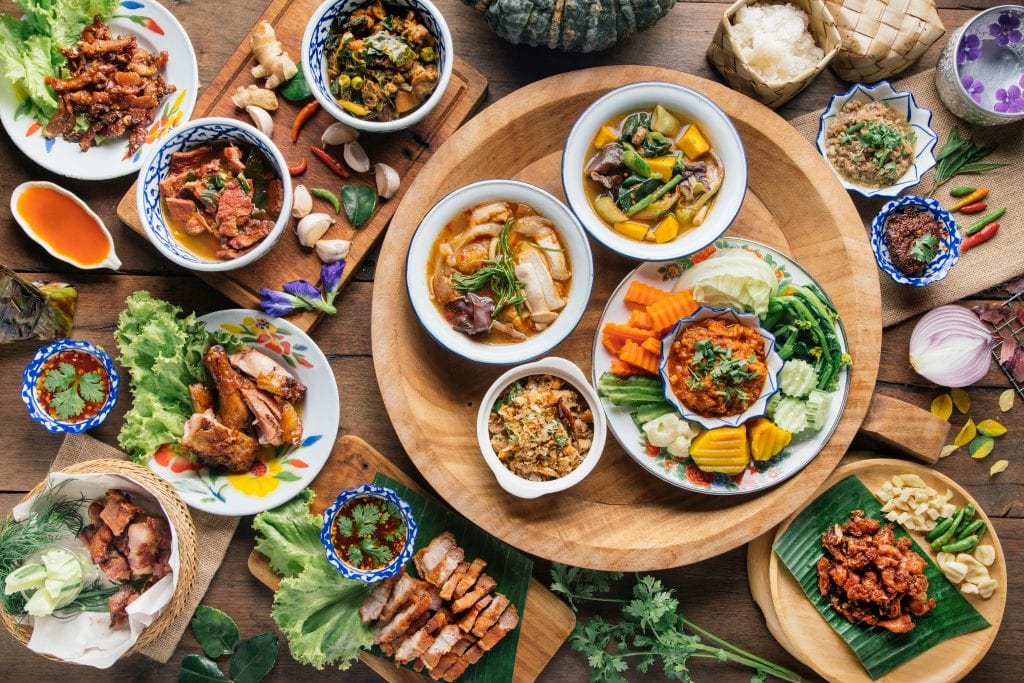
5. Food
Thai cuisine enjoys global popularity, yet it’s worth noting that dishes from different regions exhibit distinct flavors. The culinary experience in Thailand is intrinsically tied to specific regions, shaped by factors like climate, location, local traditions, and culture.
In northern Thailand, cuisine tends to be mild and seldom sweet. Poultry and beef take the culinary spotlight here, owing to the region’s considerable distance from the ocean. This contributes to the relative scarcity of seafood dishes in the north. Steamed sticky rice stands as a dietary staple, frequently accompanied by other dishes. A prominent favorite among northern dishes is som tum, the delectable papaya salad.

Southern Thailand is a haven for seafood enthusiasts. Surrounded by the sea, the region offers a plethora of fresh seafood options. However, southern cuisine leans toward spiciness and bold flavors. Tom yum goong, a piquant and tangy shrimp soup, reigns as one of the south’s most iconic dishes, found in nearly every local eatery.
6. Language
The official language of Thailand is Thai, or Central Thai. However, there exists a lesser-known fact that the country is home to numerous national and regional languages. Northern and southern Thailand exhibit noteworthy language distinctions.
The prevalent tongue in northern Thailand is Northern Thai, also referred to as Lanna or Kham Mueang. This language dominates in the north and extends to certain areas of Laos. In contrast, Southern Thai, or Pak Tai, is the language spoken in southern Thailand and extends to some of the northernmost communities in Malaysia.
7. Transportation
Northern Thailand boasts two major airports: Chiang Mai International Airport and Chiang Rai Domestic Airport. These airports operate daily flights to and from Bangkok, often proving more economical than land transport. For those preferring land travel, a train journey from Bangkok to Chiang Mai is an option.
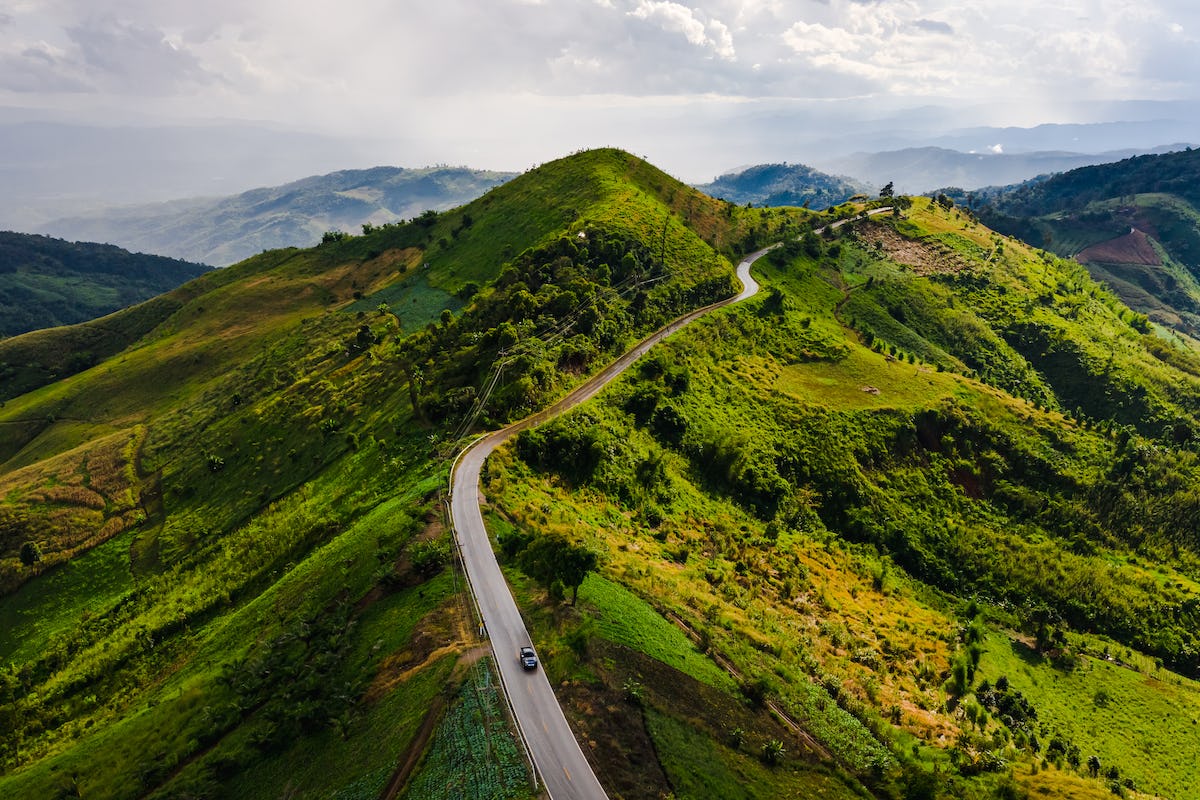
Southern Thailand excels in transportation development. The region hosts multiple significant airports, such as Phuket International Airport, Hat Yai International Airport, Samui International Airport, and Surat Thani International Airport. These airports facilitate seamless travel to and from southern Thailand. Budget-conscious travelers can opt for numerous overnight buses from Bangkok. Furthermore, ferries and speedboats offer connectivity between most islands.
8. Affordability
Northern Thailand holds an edge in affordability over its southern counterpart. Consequently, if budget considerations are paramount, the north is the more appealing option. Southern Thailand, on the other hand, carries a significantly higher cost, encompassing everything from cuisine to lodging. Even major cities like Chiang Mai are more economical compared to most southern cities.
Hence, the choice between traveling to the north or the south is subjective. It hinges on your desired experiences, budget constraints, and timing. Both ends of Thailand possess their own captivating charm. Regardless of your chosen destination, disappointment is unlikely. For a comprehensive understanding of Thailand’s contrasts, visiting both the northern and southern regions is the ideal approach.






